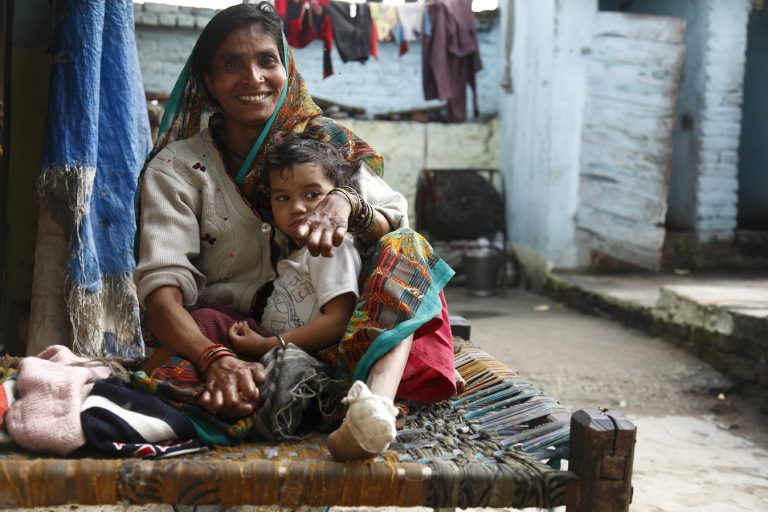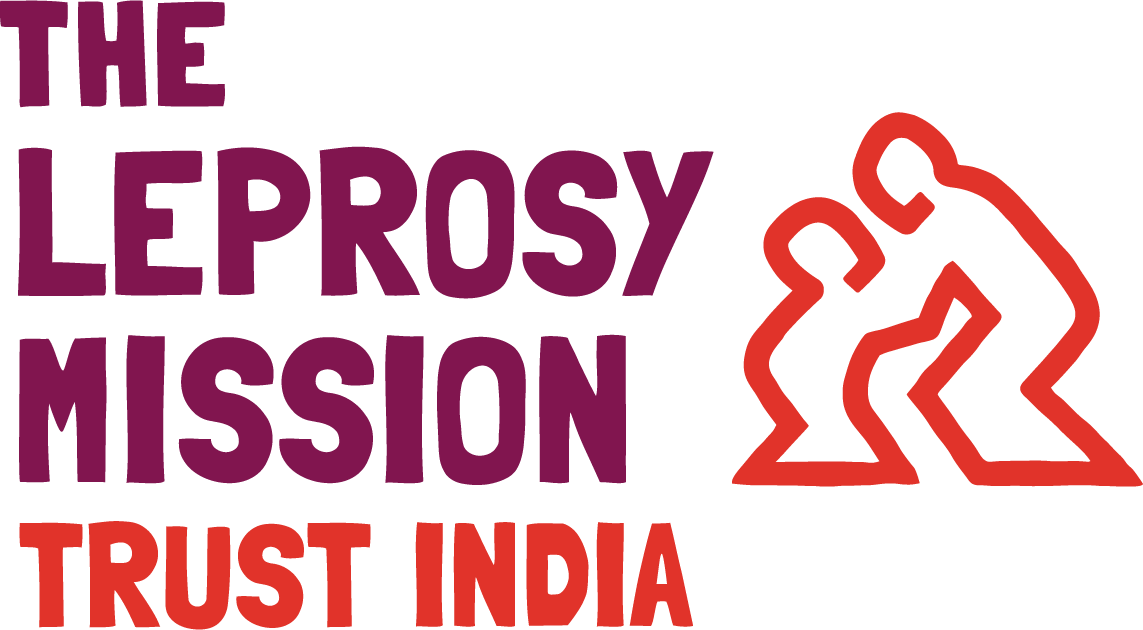Significant figures: Is leprosy a disease of the past?

How old is leprosy? No one knows for sure. But researchers believe that the earliest evidence of leprosy comes from a 4,000-year-old human skeleton that was excavated in Balathal, in Udaipur district of Rajasthan, in 2009[i].
But this 4,000-year-old disease is still buried in many myths and misconceptions. One such misconception is that leprosy is a disease of the past and that it is not prevalent today. And because of this misconception, leprosy has fallen off the radar of attention of the world community, making it a highly neglected disease. It’s time to bust this myth. Here’s the latest data for this:
Which countries is leprosy found in the world today?
The World Health Organization has reported that, in 2016, out of 143 countries (among WHO regions) that have filed reports, 214,783 new leprosy cases were detected in 111 countries.[ii]
This means that every 2 minutes someone was diagnosed with leprosy.
WHO regions and countries in the regions where leprosy cases were detected:
The World Health Organization Member States are grouped into six WHO regions: African Region, Region of the Americas, South-East Asia Region, European Region, Eastern Mediterranean Region, and Western Pacific Region. Given below are the WHO regions and the countries in the regions where leprosy cases were detected in 2016. Figures shown against countries in brackets are the number of cases detected and the countries are shown in descending order of leprosy cases detected.
South-East Asia Region – 161,263 new cases (75.08% of the global caseload)
India (135,485); Indonesia (16, 826); Nepal (3,054); Bangladesh (3,000); Myanmar (2,609); Thailand (163); Timor-Leste (110); Bhutan (10); Maldives (6)
Region of Americas – 27,356 new cases (12.74% of the global caseload)
Brazil (25,218); Paraguay (341); Colombia (314); Venezuela (303); Argentina (295); Cuba (186); United States of America (168); Mexico (152); Dominican Republic (125); Bolivia (69); Guyana (52); Suriname (25); Peru (23); Trinidad and Tobago (23); Ecuador (18); Costa Rica (16); French Guiana (13); Jamaica (5); Uruguay (3); Honduras (2); Panama (2); Chile (1); El Salvador (1); Nicaragua (1)
African Region – 19,384 new cases (9.02% of the global caseload)
DR Congo (3,765); Ethiopia (3,692); United Republic of Tanzania (2,047); Madagascar (1,780); Nigeria (1,362); Mozambique (1,289); Cote d’lvoire (895); Angola (619); Burundi (431); Central African Republic (385); Niger (350); Senegal (332); Comoros (310); Ghana (291); Cameroon (282); Malawi (272); Guinea (244); Uganda (211); Burkina Faso (208); Mali (144); Sierra Leone (140); Chad (89); Togo (82); Congo (73); Rwanda (35); Guinea Bissau (22); Gabon (18); Equatorial Guinea (10); Sao Tome Principe (3); Lesotho (2); Reunion (1)
Western Pacific Region – 3,914 new cases (1.82% of the global caseload)
Philippines (1,721); China (672); Papua New Guinea (356); Kirbati (218); Malaysia (206); Federated States of Micronesia (169); Cambodia (154); Viet Nam (138); Marshall Islands (80); Lao People’s Democratic Republic (64); Solomon Islands (43); Australia (19); Guam (16); Samoa (11); American Samoa (7); Singapore (7); Tuvalu (7); Republic of Korea (4); China, Hong Kong Special Administrative Region (3); Fiji (3); Japan (3); New Caledonia (3); French Polynesia (2); China, Macao Special Administrative Region (2); Northern Mariana Islands (2); Palau (2); Vanuatu (2)
Eastern Mediterranean Region – 2,834 new cases (1.32% of the global caseload)
Egypt (651); Somalia (635); Sudan (624); Pakistan (397); Yemen (367); Afghanistan (48); United Arab Emirates (40); Qatar (36); Morocco (25); Kuwait (6); Bahrain (3); Lebanon (1); Libya (1)
European Region – 32 new cases (0.01% of the global caseload)
Italy (12); United Kingdom (5); Netherlands (5); Portugal (4); Belgium (3); Germany (2); Uzbekistan (1)
We can see from the above that India topped the list of endemic countries, accounting for 63.08 percent of the 214,783 new leprosy cases worldwide in 2016. Brazil came second, accounting for 11.74 percent, and Indonesia came third, accounting for 7.83 percent.
What is the leprosy situation in India?
The Central Leprosy Division, Ministry of Health and Family Welfare, Government of India has reported that in 2016-17, a total of 135,485 new leprosy cases were detected in India[iii].
This means:
- Every 4 minutes, someone was diagnosed with leprosy in India
- Every 4 minutes, I family (family of the person diagnosed with leprosy) faced the potential threat of social exclusion because of the acute, age-old stigma associated with the disease
Of the new cases detected:
53,072 were women (39.17% of the new cases).
That is:
- 145 women were diagnosed with leprosy every day, on an average
- Every 10 minutes, a woman was diagnosed with leprosy
- 1 out of every 3 persons diagnosed was a woman
11,792 were children (8.70% of the new cases).
That is:
- 32 children were diagnosed with leprosy every day, on an average
- Every 45 minutes, a child was diagnosed with leprosy
- 1 out of every 12 persons diagnosed was a child
67,160 were multibacillary (MB) cases (49.57% of the new cases).
5,245 were with Grade 2 deformity (visible deformity) (3.87% of the new cases).
States and Union Territories where more than 1,000 new cases were detected in 2016-17 (countries are shown in descending order of leprosy cases detected).
- Uttar Pradesh: 22,301new cases (16.46% of the cases detected in India)
- Bihar: 21,818 (16.10%)
- Maharashtra: 15,012 (11.08%)
- Chhattisgarh: 12,609 (9.31%)
- West Bengal: 11,236 (8.29%)
- Odisha: 10,045 (7.41%)
- Gujarat: 7,266 (5.36%)
- Madhya Pradesh: 7,152 (5.28%)
- Jharkhand: 6,253 (4.62%)
- Tamil Nadu: 4,937 (3.64%)
- Andhra Pradesh: 4,228 (3.12%)
- Karnataka: 2,897 (2.14%)
- Telangana: 2,658 (1.96%)
- Delhi: 1,812 (1.34%)
- Rajasthan: 1,042 (0.77%)
- Assam: 1,019 (0.75%)
Leprosy is certainly not a disease of the past. It is growing and destroying lives at a pace that no one ever imagined. Let’s join hands to fight this age-old disease.
[i] http://www.sciencemag.org/news/2009/05/skeleton-pushes-back-leprosys-origins
[ii] http://apps.who.int/iris/bitstream/10665/258841/1/WER9235.pdf
[iii] http://nlep.nic.in/pdf/Annual%20report_%202016-17_rev.pdf


